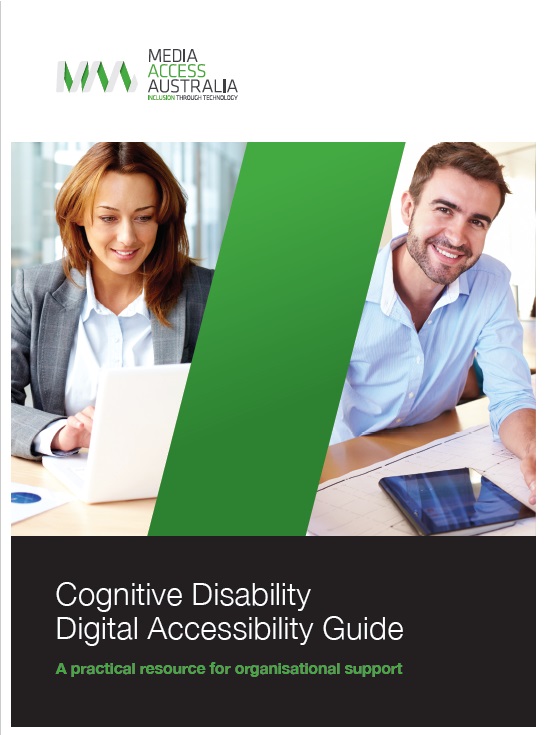Cognitive disability can be a difficult condition to understand. This is particularly the case for organisations wanting to be able to find out how to better address the communication needs of their managers, staff and consumers with a cognitive disability, in a media context.
That’s why Media Access Australia has created a practical resource for organisational support: the Cognitive Disability Digital Accessibility Guide, which is free to download from the Media Access Australia website.

The comprehensive 12-page booklet was written by Dr Scott Hollier, the Director of Digital Accessibility for Media Access Australia. Scott’s work focuses on making computers and internet-related technologies accessible to people with disabilities and he is recognised as a world expert on digital accessibility issues.
Dr Hollier launched this practical guide, and gave an address on the topic on 17 May, at the 2016 Round Table on Information Access for People with Print Disabilities conference in Melbourne. The presentation, titled ‘Breaking Barriers: Adopting Simple English’ provided guidance on how best to address media-related accessibility issues for people with cognitive disabilities.
The presentation concentrated on a key component of the guide, which focuses on how the needs of people with cognitive disabilities can be addressed by following web-based accessibility standards and ensuring that accessibility is applied across different roles including policy officers, web developers, content producers, marketers, and communications staff.
“A crucial area of importance for the guide is that it explores not only the traditionally implemented accessibility guidelines of WCAG 2.0 Level AA, but also looks at the increasing relevance of Level AAA requirements,” says Dr Hollier.
“This includes the need to ensure that a quick reference sheet is written to a lower secondary level which is referred to as simple English,” he explains, “as well as the need to define abbreviations and acronyms, so that everyone gets the meaning right.”
The new guide has been designed to deliver practical, step-by-step information in order to enable best-practice web and digital communication to be prepared and then delivered in an inclusive and effective way. It also explores the role of affordable consumer devices such as tablets and helpful apps.
You can download the Cognitive Disability Digital Accessibility Guide for free from the Media Access Australia website.
